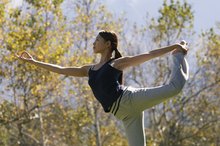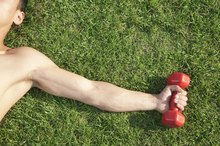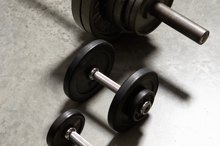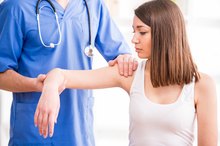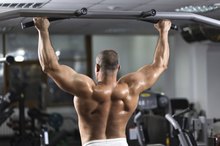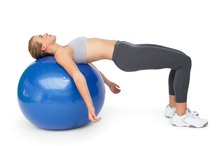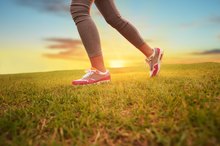Signs & Symptoms of a Strained Sternocleidomastoid Muscle
The sternocleidomastoid, or SCM, muscle originates on the breastbone and attaches to the collarbone and the temporal bone on the back of the skull 1. You have one SCM on each side of your neck. These muscles tilt and rotate your head to the right and left. Sudden movements, such as whiplash, can cause SCM injury.
If you are experiencing serious medical symptoms, seek emergency treatment immediately.
Muscular Symptoms
A strained SCM can produce swelling and redness along the muscle, at the site of the injury. In severe cases, you also may see bruising along the path of the injury. If the strain results in a muscle spasm, you may notice a twitching or fluttering beneath the surface of the skin along the side of your neck. Applying ice for 20 minutes several times daily may relieve swelling and redness.
- A strained SCM can produce swelling and redness along the muscle, at the site of the injury.
Functional Symptoms
Torn Tendons & Ligaments From Hyperextension
Learn More
You may feel a dull pain along the path of the injury, accompanied by sharp pain when turning or tilting your head. Stiffness, muscle fatigue and difficulty holding your head upright may also occur. Wearing a neck brace supports the weight of your head, temporarily relieving the stress on your SCM muscle. Over-the-counter nonsteroidal antiinflammatory drugs -- NSAIDs -- such as ibuprofen (Advil, Motrin) and naproxen (Naprosyn, Aleve) and analgesic rubs can relieve some of the pain associated with the strain.
- You may feel a dull pain along the path of the injury, accompanied by sharp pain when turning or tilting your head.
- Wearing a neck brace supports the weight of your head, temporarily relieving the stress on your SCM muscle.
Systemic Symptoms
SCM strain may cause headaches, especially at the muscle's attachment point at the base of your skull. Other symptoms may include face or head pain, ringing in your ears, dizziness and blurred vision. Pain and stiffness can disrupt your sleep, which can lead to irritability, fatigue, memory problems and difficulty concentrating. A neck brace will support your head while you sleep. You may also try sleeping on your back with a rolled towel under your neck instead of a pillow to support the natural curve at the base of your skull.
- SCM strain may cause headaches, especially at the muscle's attachment point at the base of your skull.
When to See a Doctor
How Does Exercise Improve Your Posture?
Learn More
Consult your doctor if you experience pain, numbness or tingling radiating down one or both arms, or muscle weakness in your arms or shoulders. While it may be difficult to move your head, talk to your doctor if you are unable to move your head at all, or if the pain worsens over time. Physical therapy and chiropractic interventions can help reduce symptoms caused by SCM strain.
Related Articles
References
- Journal of the Canadian Chiropractic Association: Sternocleidomastoid Syndrome -- A Case Study
- Journal of Manual & Manipulative Therapy: Cervicogenic Dizziness: A Case Report Illustrating Orthopaedic Manual and Vestibular Physical Therapy Comanagement
- Missaghi B. Sternocleidomastoid syndrome: a case study. J Can Chiropr Assoc. 2004;48(3):201-5. PMID:17549118
- MedlinePlus, U.S. National Library of Medicine. Torticollis. Updated April 30, 2018.
- Kapandji, I.A., "The Physiology of the Joints". Fifth Edition. Churchill Livingstone. English Edition 1987. New York.
- Kendall, Florence Peterson, McCreary, Elizabeth Kendall, and Provance, Patricia Geise. Muscles Testing and Function with Posture and Pain. 3rd. Baltimore, Maryland: Williams & Wilkins, 1983
- Moore, Keith, L., Dalley, Arthur, F. Clinically Oriented Anatomy. 5th Edition. 2006 Lippincott, Williams and Wilkins.
Writer Bio
Julia Michelle has been writing professionally since January 2009. Her specialties include massage therapy, computer tech support, land and aquatic personal training, aquatic group fitness and Reiki. She has an Associate in Applied Science from Cincinnati State Technical and Community College in integrative medical massage therapy.

